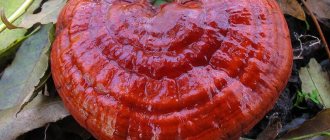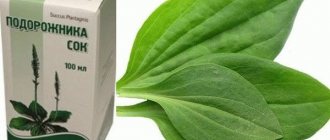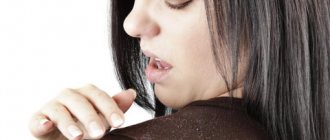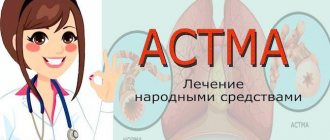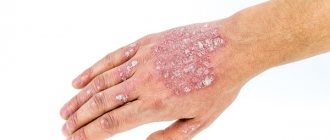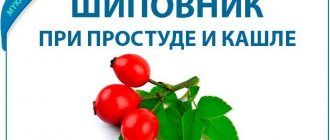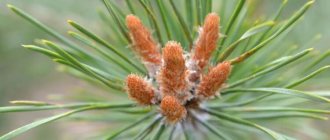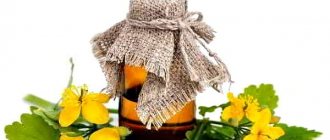Disturbances in the outflow of bile in the body provoke diseases of internal organs, dysfunction of the gastrointestinal tract, and a general deterioration in well-being. Only timely treatment prevents the development of complications.
Choleretic agents for stagnation of bile stimulate its production, accelerate the excretion process, and normalize the functionality of the digestive system. Their use is also advisable for preventive purposes.
What is bile and bile stagnation?
Bile is a biologically active liquid, which is the end product of the activity of hepatocytes. It has a special smell, an extremely bitter taste, yellow, green and brown shades.
From the moment of formation to hatching there are 3 stages:
- Bile production in the liver. In an adult, the organ produces from 0.6 to 1 liter of fluid per day.
- Accumulation of bile in the gallbladder . Here the components are separated: water, chlorine, sodium and various electrolytes are sent into the blood, and bile pigments, phospholipids, cholesterol, bile salts remain in the bladder.
- Release of concentrated fluid into the duodenum. At this stage, healthy digestion, breakdown of fats, unhindered absorption of vitamins and microelements, and production of pancreatic enzymes are ensured.
If bile does not enter the intestinal tract and stagnates, doctors diagnose cholestasis - stagnation of bile.
As a result, lipid metabolism is disrupted, cholesterol and glucose accumulate in the blood, stones form in the gallbladder, and the risk of developing atherosclerosis increases.
Causes of stagnant processes
Stagnation of bile can be localized at any of the sites of secretion movement. Hepatic congestion occurs due to structural changes in the liver and damage to the organ by pathogenic microorganisms.
In the gallbladder and ducts, pathological accumulation of bile occurs due to the following reasons:
- disturbances in the contractile activity of the gallbladder, its abnormal development;
- inflammatory processes in the area of the bladder neck;
- cystic formations in the bile ducts;
- oncological lesions of the abdominal organs;
- stones in the gallbladder.
Chronic diseases of the digestive system predispose to the development of secondary ailments. Bile stagnation is one of the most common complications.
Among the risk factors that predispose to the development of any of the above reasons, it is worth highlighting: abuse of fatty and sweet foods, as a result - excess weight, addiction to alcoholic beverages and drugs, sedentary lifestyle, resection of the gallbladder.
Why stagnation of bile is bad
To prevent bile from stagnating in the bladder, it must be renewed regularly. To do this, a person must eat often and in small portions. The mechanism is very simple: I ate - bile was released into the intestines - the liver produced new bile and again “unloaded” it into the bladder. And so on in a circle.
If a person does not eat for a long time, bile stagnates. Because of this, a sediment first forms in the gallbladder, then biliary sludge (sand-type suspension), then stones. There are other factors that contribute to bile stagnation: chronic gastrointestinal diseases, a sedentary lifestyle, an abundance of fatty foods in the diet (wrong fats).
Bile helps the body process fats - this is its main function. If fats are poorly digested, their deficiency occurs and cholesterol metabolism is disrupted. Another “side effect” of bile stagnation is the formation of gallstones and the development of the inflammatory process.
Stagnation of bile can manifest itself through:
- heaviness in the area of the right hypochondrium;
- discomfort after fatty foods;
- nausea;
- constipation or, conversely, frequent loose stools;
- bitter belching;
- weakness, constant fatigue.
Who is most often diagnosed with gallstone disease? Gallstone disease is one of the most common pathologies in the world. It occurs in 10-15% of patients in Russia, North America and Europe.
Symptoms of bile stagnation
The pathological accumulation of bile secretion, due to the inhibition of their further progress, is fraught with characteristic symptoms:
- discolored stool, dark urine;
- skin itching caused by the accumulation of bile acids in the blood plasma;
- intestinal disorders or constipation;
- paroxysmal dull pain in the upper quadrant of the abdomen on the right, rarely - colic;
- heartburn followed by the formation of bitterness, dry mouth and unpleasant odor;
- feeling of nausea and vomiting.
Despite the generally accepted stereotype, not everyone experiences jaundice. Only a very high level of conjugated bilirubin in bile can turn the mucous membranes, skin and sclera yellow. An increase in body temperature is observed in the presence of infection.
Contraindications
If symptoms characteristic of cholestasis are detected, it is strictly prohibited:
- engage in self-medication - given serious disturbances in the functioning of the digestive system, incorrectly chosen treatment tactics can seriously aggravate the pathological process;
- use choleretic drugs before ultrasound, since the presence of stones is a strict contraindication;
- take alcohol and potent medications that negatively affect the liver;
- include fatty, fried, sour, cold foods in your diet.
Traditional medicine has many contraindications and side effects, so their use without a doctor’s prescription is unacceptable.
Folk remedies
As is known, in some cases surgical intervention is required to eliminate the cause of cholestasis. That is why it is strongly recommended not to self-medicate at home, but to immediately consult a specialist at the first symptoms of cholestasis. It is important to understand that the use of traditional medicine in this case will not only not provide any help, but can also cause harm. However, there are folk remedies that can be used for preventive purposes. We offer to your attention the following:
- take 20 g of pre-prepared rose hips and 10 g of crushed nettle leaves. Mix the listed ingredients and pour two glasses of boiling water over them, then place in a water bath and boil for 15 minutes. After which the resulting decoction should be infused for 1 hour, having previously wrapped the container containing the decoction. The drink becomes ready for use after careful straining. It is recommended to consume 50 ml throughout the day;
- Dry the birch leaves and chop them finely. Take 1 tablespoon of plant material and pour one glass of boiling water, then heat over low heat in a water bath for 30 minutes. Then the resulting decoction must be allowed to brew for half an hour, after which it should be strained. It is recommended to consume 1/3 glass 3 times a day 30 minutes before meals;
- mix chopped chicory root and dried peppermint leaves in equal proportions. To prepare the infusion, you will need 10 g of the resulting plant collection. Pour 10 g of the collection into glasses of boiling water and let it brew for 1 hour. After this, the resulting infusion should be filtered through a strainer. One glass of infusion is drunk during the day. The course of treatment varies from 1 week to 1 month;
- Grind 1 glass of flax seeds and pour them with three glasses of milk. Then place on low heat until approximately 1/3 of the original volume of liquid remains in the container. After this, the solution is carefully filtered through a strainer. It is recommended to drink one glass per day. The duration of use of this recipe is 10 days, after which a break is taken;
- take 3 drops of peppermint oil and one teaspoon of honey. Mix the listed components thoroughly. The resulting mass should be consumed 3 times a day. The duration of the course is 1 month;
- mix red beet juice with black radish juice in equal proportions. It is recommended to consume 1 glass per day, preferably in the morning. The duration of the course is 1 month.
Source
Treatment
Medicines for bile stagnation and biliary dyskinesia are divided into several groups:
- Natural remedies provide the safest effect on the body with minimal likelihood of side effects. They are low in cost and are available in the form of syrups, alcohol tinctures, tablets, and tea mixtures.
- Synthetic ones , despite their artificial origin, provide a more pronounced therapeutic effect.
- In addition, medicines with bile extract from animals are of particular importance , these are Allohol, Hologon, Liobil, Hologon, Cholenzym. They improve peristalsis, make bile less thick, and some of them contain real enzymes produced by the pancreas.
Diet for bile stagnation
A diet for bile stagnation helps to empty the gallbladder in a timely manner and avoid dangerous complications, including cholecystitis and the development of gallstones. It is recommended to eat small meals, never overeating. A common mistake is to give up fat almost completely. But fatty acids are vital for humans. If he does not receive vegetable and animal fats in limited quantities, bile stagnation and other adverse health consequences occur.
The main rule of nutrition during bile stagnation is the absence of long intervals between meals, when the gallbladder does not empty for a long time. It is also necessary to avoid overloading the biliary tract and avoid consuming fried, fatty, overly spicy foods and alcoholic beverages.
Classification of choleretic drugs
The classification of drugs for bile stagnation is based on the chemical structure of each drug and their therapeutic effect. They affect the body differently, so they are prescribed by a gastroenterologist on an individual basis.
In total there are 5 main types:
- Choleretics - stimulate the production of bile by hepatocytes.
- Cholespasmolytics - relax the muscles of the gallbladder, eliminate spasms.
- Cholekinetics - weaken the walls of the biliary tract and increase the tone of the gallbladder.
- Hydrocholeretics . Increase the percentage of water content in bile.
- Litholytic drugs . Dissolve already formed stones in the gallbladder.
Choleretics
These agents activate the synthesis process, which significantly increases the production of bile.
Depending on their composition, choleretics are divided into 3 groups:
- True - the products are based on animal extracts: pancreatic tissue, intestinal lining, animal liver or real bile. These include Liobil, Cholenzym, Hologon, Allohol.
- Synthetic - the active substances are compounds obtained as a result of organic synthesis. Medicines of this series have a complex effect on the body: they provide a choleretic effect, suppress inflammation, relieve spasms, kill bacteria, and improve digestion. The most famous representatives: Tsikvalon, Osalmid, Nikodin.
- Plant-based - include exclusively natural ingredients. Hophytol contains artichoke extract, Holosas - rosehip, Flamin - immortelle, Febichol - turmeric, Berberis-Gommacord - barberry. Each of the drugs supports the healthy functioning of the liver, normalizes the viscosity of bile and the level of its production. Complex products have the best effect, these are Travochol, Cholagol, Urolesan.
The main indications for the use of drugs from the group of choleretics are diseases such as chronic hepatitis, cholecystitis without the formation of stones, cholangitis.
Cholespasmolytics
Their use is advisable to suppress painful spasms of the bladder and weaken the muscle tone of the bile ducts. This removes the obstacle to the excretion of concentrated bile.
Cholespasmolytics are always included in the symptomatic treatment of cholecystitis, cholelithiasis, intestinal, biliary or renal colic, duodenal ulcers and other pathologies. Divided into 3 groups:
- Synthetic - Mebeverine, Papaverine, No-shpa.
- Herbal - tincture of valerian, arnica, lemon balm, St. John's wort, elecampane.
- Anticholinergics - acetylcholine blockers: Atropine, Platiphylline, Besalol, Bellalgin.
Mebeverine
Papaverine
No-shpa
Valerian
Atropine
Platyfillin
Besalol
Bellalgin
Cholekinetics
A special group of drugs that simultaneously relax the muscles of the biliary tract and increase the tone of the gallbladder. This ensures the expulsion of bile and its free passage to the duodenum.
Cholekinetics provide invaluable assistance for cholecystitis of any form, inflammation of the liver tissue and bile ducts.
The most popular pharmaceutical drugs:
- Sorbitol;
- Holosas;
- Flamin;
- Magnesia;
- Mannitol.
Important! Cholekinetics are strictly contraindicated in case of cholelithiasis, otherwise the stones may move and block the bile duct, which will provoke acute pain.
Flamin
Mannitol
Magnesium sulfate ampoules
Holosas
Hydrocholeretics
One of the effective ways to reduce the thickness of bile is to increase the percentage of water in acids. Hydrocholeretics have this ability.
These include:
- mineral waters with a high content of alkalis: Borjomi, Polyana Kvasova, Essentuki, Narzan;
- sodium salicylate;
- medicines based on valerian - tablets, tinctures.
In addition to the therapeutic effect aimed at diluting thick bile, it prevents the formation of stones.
Borjomi
Essentuki
Narzan
Valerian tablets
Choleretic drugs with litholytic action
Litholytic therapy involves medicinal dissolution of existing stones and removal of remnants. The preventive effect is no less pronounced - while taking this type of choleretic drugs, the formation of stones in the gallbladder is impossible.
Accordingly, such drugs are recommended for gallstone disease and in cases of high risk of its development.
There are two main active ingredients that have the necessary effect:
- Methyl tert-butyl ether;
- Chenodeoxycholic and ursodeoxycholic acids - Ursosan, Livodex, Choludexan, Ursolite, Exchol.
Ursosan
Livodex
Choludexan
Ursolite
exhol
Choleretic herbal preparations
The domestic pharmaceutical market offers many types of drugs for bile stagnation of plant origin.
All kinds of herbs and berries not only have a choleretic effect, but also eliminate the inflammatory process, help reduce spasms, and normalize the functioning of the abdominal organs.
These include: corn silk, calamus root, spotted milk thistle, bloodroot, hawthorn, St. John's wort, caraway, pine, common dandelion, birch, knotweed, tansy, celandine, rose hips, oats, basil, aloe, radish root and juice, thistle.
There is an opinion that medicines of natural origin are highly safe and therefore suitable for self-treatment. This kind of behavior is dangerous.
Only the attending physician, after a thorough examination, can recommend any of the following drugs:
- Tanacehol;
- Urolesan;
- Flamin;
- Holemaks;
- Chophytol;
- Berberis plus and others.
Tanacehol
Urolesan Flamin
Holemaks
Hofitol
Berberis plus
The main indications for the use of choleretic agents from natural components are cholecystitis, which characterizes inflammation of the gallbladder, impaired bile production, acute and chronic pancreatitis. The latter is diagnosed with inflammation of the pancreas.
This disease in most cases is an inevitable consequence of bile stagnation.
List of the most effective choleretic agents
The best choleretic remedy for bile stagnation is compliance with a whole range of health measures. They are aimed at stimulating the functioning of the digestive organs, cleansing the liver, and normalizing the functions of the gallbladder. The combination of actions that help get rid of the disease includes:
- Compliance with the basics of dietary nutrition.
- The use of medications, achievements of traditional medicine that improve the secretion of the gallbladder.
- Active lifestyle - it is an excellent “choleretic agent” for preventing bile stagnation.
- Compliance with the drinking regime, inclusion of still mineral water in the therapeutic diet.
- If you are overweight, limit the calorie content of foods to 2000 kcal per day.
Food
Congestion in the gallbladder can be prevented by adhering to the basics of dietary nutrition. The main enemies of a healthy liver are salty and spicy foods. “Outlaw” are spices, smoked meats, baked goods and sweets. Small meals up to 4-6 times a day will help. It is not necessary to eat large portions. Overeating is dangerous with dyskinesia of the bile ducts, causing heaviness and pain on the right side of the hypochondrium.
What are choleretic foods? They enhance the kinesthetics of the digestive tract, stimulate the release of bile into the intestines, removing stagnation and relieving spasms. However, you should not consume choleretic products in large quantities. The consequences of uncontrolled use can be the movement of stones through the bile ducts with subsequent removal of the bladder. Useful choleretic agents for bile stagnation are:
- Vegetable oils. They stimulate the production of cholecystokinin, a hormone responsible for the formation and entry of bile into the stomach.
- Fresh vegetable juices based on beets, carrots, cabbage; berry fruit drinks from lingonberries, cranberries; sauerkraut juice.
- Fresh fruits, vegetables. Helps enhance gastrointestinal motility, gently cleanses the liver and intestines, preventing stagnation of bile.
- Fiber in bran. Wheat and oatmeal, they are an excellent way to cleanse the liver, which is the first to be “under attack” during cholestasis.
- First meal. Vegetable soups, borscht or low-fat poultry broths are indispensable dishes for dietary nutrition to prevent/treat bile stagnation.
- Parsley, dill, cilantro, rosemary, celery, spinach, and lettuce have excellent choleretic properties.
Folk remedies
The use of choleretic compounds has been tested for many generations. Traditional medicine will help relieve the painful manifestations of cholestasis, stimulate the outflow of bile and the activity of the body's metabolic functions. The natural composition and the absence of specific allergens make folk recipes accessible for use during pregnancy. Medications that reduce congestion will help to avoid the development of the disease:
- Drinking vegetable oil and lemon juice on an empty stomach. A tablespoon of flaxseed, rapeseed, olive or sunflower oil with a similar amount of lemon juice will start metabolic functions. The composition will gently cleanse the intestines and liver from stagnation of bile after a night's rest.
- Xylitol or sorbitol. “Blind” tubage based on these substances using a heating pad in the liver area is a remedy that helps get rid of bile stagnation. The procedure should be carried out after consultation with a gastroenterologist, preferably under the supervision of a doctor.
Choleretic herbal teas
Effective means of relieving bile stagnation are teas, decoctions and infusions of herbs with choleretic properties:
- Immortelle, tansy, angelica and corn silk perfectly cleanse the liver of toxins, while simultaneously stimulating the breakdown of food in the gastrointestinal tract.
- Cumin and peppermint improve metabolic processes and relieve stress. These are at the same time natural antispasmodics.
- Pharmacy chains offer choleretic herbal infusions, known under numbers 1, 2 and 3. The main components are: immortelle, yarrow, mint, coriander, which eliminate bile stagnation.
- Herbal collection choleretic 3 contains natural antiseptics - chamomile, calendula flowers, which prevent the development of inflammatory processes in the biliary tract, plus tansy, immortelle.
Medications
Choleretic drugs for biliary dyskinesia are represented by antispasmodics, choleretics, and cholinetics. Natural or synthetic, they are available in tablets, granules, and liquid form (ampoules). When treating bile stagnation, the standard regimen prescribed by a doctor is as follows:
- Taking antispasmodics with an analgesic effect from 5 days to 2 weeks.
- Choleretics according to the instructions are taken for a long time - up to three months.
- Cholekinetics are prescribed situationally if there is a need to stimulate the flow of bile.
Vegetable origin
Herbal choleretic drugs for bile stagnation are widely represented on the market, have a low price and are relatively safe due to their natural composition. Your doctor will help you choose a medicine by first determining the cause of bile stagnation. The type of medication prescribed depends on the clinical picture of the disease. You will be offered:
- alcohol tinctures: common barberry, corn silk;
- syrups (without alcohol): Holosas, Rosehip and mint;
- tablets: Febichol, Flamin, Tanacechol, Berberine;
- tea mixtures: Holaflux (Germany-England).
Animal
Choleretic drugs may have a different origin. Preparations containing extracts of animal bile and its acids can reduce the load on the pancreas and gall bladder. The substances are quickly processed by the liver, stimulate the mechanisms of food breakdown in the intestines, and make bile less viscous. These are Allohol, Cholenzym (with pancreatic enzymes), Lyobil (contains purified bovine bile), Hologon (a weak choleretic effect with increased bile formation).
- Hormonal gymnastics of Tibetan monks - reviews and videos
- How to choose a ripe and sweet pomegranate. Ways to identify the ripest pomegranate in the store
- Hirudotherapy - harm and benefit for the female body. Application of hirudotherapy in gynecology, video
Synthetic
The synthesized drugs prescribed for bile stagnation have a more pronounced nature of action. Their use requires a lower dosage than drugs of natural origin. The line is represented by Russian-made drugs: Nikodin, Oxafenamide, Polish Gimecromon, Cyqualon. In addition to choleretic, artificially created drugs have antispasmodic, anti-inflammatory, and analgesic mechanisms.
Brief instructions for taking choleretic drugs
To achieve maximum effectiveness from the prescribed medication, several important rules should be strictly followed:
- all choleretic drugs must be taken on an empty stomach, no less than 30-60 minutes before meals;
- tablets, syrups or tinctures should be taken with plain clean water; in some cases, diluting liquid forms with unsweetened tea or juices is acceptable;
- an hour after taking a portion of the medicine, you need to eat, otherwise intestinal upset is inevitable: diarrhea, nausea, vomiting;
- the minimum course of treatment is two weeks or more; failure to comply with the duration and frequency of use of the choleretic drug reduces the effectiveness of therapy.
In the chronic course of the disease, the need to constantly maintain the functioning of the bile ducts and gallbladder, treatment is carried out in courses with equal frequency, but no more than 4 times a year.
If the doctor prescribes a daily dose of the drug, it can be evenly divided into 2-4 doses.
The most effective drugs for bile stagnation
Of all the choleretic drugs presented in modern pharmacies, several of the most popular drugs stand out:
- Allohol . A product with natural ingredients, made on the basis of dried bile, extracts of garlic, nettle and activated purified carbon. It has a complex effect on the digestive system, rarely provokes side effects, and has few contraindications: acute gallbladder and liver diseases. The average cost of 50 tablets is 45 rubles .
- Holenzim . A medicine from a number of true choleretics, consisting of pancreatic enzymes and natural bile of cattle. It is successfully used not only for stagnant processes, but also for the treatment of inflammatory diseases of the gastrointestinal tract. Negative side effects are possible only if you are individually intolerant to the drug. Pharmacy prices vary from 160 to 200 rubles . per package.
- Odeston. A synthetic medicine with the active ingredient hymecromone. Relaxes the bile ducts, suppresses spasms, prevents cholesterol crystallization with subsequent stone formation. May have a negative effect on the gastric mucosa, so simultaneous use of coating agents is recommended. In Russian pharmacies, 50 Odeston tablets can be purchased for an average of 500 rubles .
- Flamin . Herbal medicine with immortelle extract. The active substance helps to contract the gallbladder and weaken the muscle tone of the ducts, which ensures the unimpeded removal of bile. Not prescribed for hypertensive patients, allergy sufferers and ulcer patients. The average cost is 160 rubles . for 30 tablets.
- Oxafenamide . Thanks to the active substance osalmide, synthesized artificially, choleretic, cholekinetic, analgesic and choleretic effects are provided. Strictly contraindicated for jaundice, ulcerative lesions of the gastrointestinal tract, obesity and structural changes in the liver. It is possible to develop an allergic reaction - redness, itching, rash. Oxafenamide and its direct analogues can be purchased at a cost of 450 to 530 rubles .
- Gepabene. A combined remedy of milk thistle fruits and fume herb. Stabilizes the functioning of the liver, the formation and excretion of bile. Sometimes it provokes increased diuresis. It belongs to a number of expensive choleretic drugs - from 400 rubles . for one package.
- Hofitol . The artichoke extract on which the drug is made suppresses inflammation and facilitates the excretion of bile into the small intestine. Prohibited for use in cases of cholelithiasis and severe diseases of internal organs. The duration of treatment is 14 days. For 300 rubles. you can buy 60 tablets of Hofitol.
Allohol
Holenzym
Odeston Flamin
Gepabene Hofitol
Choleretic drugs
Ready-made choleretic agents for bile stagnation should ideally be prescribed by a doctor. Drugs can be quite unpredictable, especially for people with latent cholelithiasis and calculous cholecystitis.
Allohol
Allohol is a natural herbal remedy based on dried bile. Additional components are plant extracts. The drug has been used for many decades as a choleretic agent. For information on how to take Allohol for bile stagnation, you can see the instructions from the manufacturer or ask your doctor. The standard dosage per day is 3-6 tablets. They are taken after meals. The course of treatment usually lasts a month.
Holenzym
Cholenzym contains an extract of animal bile and cattle pancreatic enzymes. The drug eliminates congestion in the gallbladder, facilitates digestion, and dulls pain. It is used not only for stagnation of bile, but also for other diseases of the digestive tract. Daily dosage: 2-3 tablets during or after meals.
Nikodin
The choleretic agent Nicodin contains derivatives of amidanicotinic acid and formaldehyde. The drug fights inflammation in the area of the gallbladder walls, which is necessary for people with cholecystitis and other concomitant diseases. The medicine accelerates the release of bile. Additionally, Nicodin has a bactericidal effect and prevents the proliferation of infectious pathogens in concentrated bile with increased lithogenic properties.
Hofitol
Chofitol has a choleretic and choleretic effect. The drug contains artichoke extract. Brown pills are familiar to many, as they are often prescribed by therapists and gastroenterologists for diseases of the liver and gallbladder. Hofitol is taken for a month, 2-3 tablets 3 times a day.
We invite you to watch the video - what doctors say about bile stagnation.
Choleretic drugs for children
Potent medications can have a negative impact on a child’s not yet formed body. Based on this, the treatment of bile stasis in children differs significantly from adults.
If the cause of the pathology is an abnormal structure of the bile ducts, the only solution is surgery.
In other cases, the doctor focuses on dietary nutrition and the use of medications:
- true choleretics - Allohol;
- choleretics of synthetic origin - Osalmid and its direct analogues;
- plant choleretics - Hofitol, Flamin, Holemaks;
- cholekinetics - magnesium sulfate, Valerian tablets, Cormagnesin;
- Cholespasmolytics - Papaverine, No-shpa, Spasmonet.
The dosage and frequency of administration of the choleretic agent is determined individually for each child, based on body weight. Natural and relatively safe hydrocholeretics for children are mineral waters with alkalis - Essentuki, Borjomi, Narzan, etc.
If the doctor prescribes a daily dose of the drug, it can be evenly divided into 2-4 doses.
Of the many types of plants with a choleretic effect, the following can be recommended for children:
- common dandelion,
- pharmaceutical chamomile,
- juniper,
- knotweed
Dandelion Chamomile
Juniper
Knotweed
The dosage should be several times less than for adults. Most choleretic herbs have a wide spectrum of action, so they can provoke an acute, undesirable reaction in the child’s body.
Table No. 5 for bile stagnation
Now that we know everything about bile-thinning foods, we can start creating a menu for every day to eat only the right foods. And for this it is best to focus on a special therapeutic diet, called “Table No. 5 ,” which will tell you how best to have breakfast, lunch and dinner, so that cholestasis goes away without a trace.
In this diet, it is recommended to focus on cereals, and you can cook them with both water and milk in order to diversify your diet.
You should also include a plate of warm, low-fat soup at lunch, eat more omelets made from steamed egg whites, and don’t forget to include fruits, vegetables and dairy products in the menu.
Occasionally you can treat yourself to marmalade, caramel, honey and marshmallows.
In general, when creating a menu (it’s imperative to know what thins bile), you can use the example from the “Table No. 5” diet as a guide.
- For breakfast , eat buckwheat porridge, eat a couple of cheesecakes and wash it all down with jelly.
- For lunch you can try rice porridge with stewed cabbage and wash it all down with kefir.
- For lunch , beetroot soup, steamed meat cutlets, and fruit juice are best.
- For an afternoon snack , you can use a blender to make puree from a sweet apple and carrots.
- For dinner , baked meat, a salad of fresh vegetables, dressed with olive oil, and not too strong tea are ideal.
The trial period for implementing such a diet is a period of 5 days, during which you can try to eat in accordance with the proposed menu. And if the body responds well to such nutrition, then in the future it will be possible to be treated with a similar diet for from 5 weeks to 2 years, depending on the severity of cholestasis.
Choleretic drugs during pregnancy
During pregnancy, treatment of bile stagnation is carried out with extreme caution: it is important to prevent increased contractile activity of the uterus, penetration of the active substance to the fetus through the placenta, and also not to provoke a significant deterioration in well-being.
Most herbal choleretics and antispasmodics are considered the safest:
- Holenzyme;
- Flamin;
- Berberis;
- Cormagnesin;
- Valerian;
- Holagol.
Taking infusions of various choleretic herbs on your own is strictly prohibited. By affecting the body of a pregnant woman and directly on the fetus, they can provoke irreversible consequences.
At the discretion of the attending physician, it is permissible to use only ready-made herbal preparations. The dosage regimen, dosage and course duration are usually standard.
Holenzim Flamin Berberis
Cormagnesin Valerian tablets
Holagol
For inflammation of the biliary organs, it is advisable to use not only herbal, but also synthetic medicines. At the same time, the doctor assesses the risk of influence on the child and constantly monitors the mother’s condition.
Such choleretic drugs include:
- Chophytol;
- Odeston;
- Eufillin;
- Febichol;
- Drotaverine;
- Atropine.
Hofitol Odeston
Eufillin
Febichole
Drotaverine
Atropine
The use of choleretic drugs for certain diseases
Stagnation of bile quite often occurs against the background of other acute or chronic diseases:
- biliary dyskinesia,
- cholecystitis,
- pancreatitis.
In this case, treatment should be aimed at eliminating the underlying disease. Symptomatic therapy is no less important, but without eliminating the key cause, the improvement in well-being will be temporary.
Before prescribing treatment, the doctor conducts a high-quality diagnosis in order to determine an accurate diagnosis. After which a suitable set of drugs is selected. Considering the presence of many contraindications in each of them, not all choleretic drugs are effective for the above diseases.
Biliary dyskinesia
The disease is characterized by impaired motility of the gallbladder and, as a consequence, a malfunction of the bile ducts.
It occurs most often in women of thin build, no more than 40 years of age. There are two main forms of dyskinesia:
- Hyperkinetic , in which there is increased tone of the gallbladder.
- Hypotonic , when muscle tone is weakened.
Given the different specifics of the development of the disease, in two cases different medications are prescribed.
With the hyperkinetic type, the following will help normalize the functioning of the digestive system:
- All types of cholekinetics - Flamin, Sorbitol, Cholemax, Holos, Berberine-Gommacord. Used over a long period of time until complete recovery.
- Any cholespasmolytics - Drotaverine, Papaverine, Bellalgin, valerian. They are prescribed in a short course at the beginning of drug treatment, then used once, if necessary, to relieve pain.
The hypotonic form of dyskinesia involves the use of the following medications:
- All types of choleretics - Allohol, Febichol, Lyobil, Flacumin, Tanacechol, etc. The course duration can reach 2-2.5 months.
- Hydrocholeretics are mineral waters with a high alkaline content. There are no restrictions on the quantity or timing of use.
- Myotropic antispasmodics - Odeston, Duspatalin. Suitable in the first days of therapy. The duration of use of such products should not exceed 2 weeks.
Cholecystitis
Cholecystitis is an inflammation of the walls of the gallbladder with a subsequent change in the physical and biochemical properties of bile.
The disease is divided into 2 main types:
- calculous
- stoneless.
The latter accounts for only 20% of all cases.
The absence of stone formations in the gallbladder makes it possible to use the following treatment agents:
- Choleretics of all types - Allohol, Lyobil, Tsikvalon, Osalmid, Urolesan, etc. Synthetic substances oxafenamide and hymecromone, along with a choleretic effect, effectively eliminate spasms. Drugs based on cyclovalone have a powerful antimicrobial effect. These features are taken into account when drawing up a therapeutic complex.
- Cholekinetics - Cholemax, Magnesia, Sorbitol, Berberine plus. Significantly facilitate the removal of bile to the duodenum.
- Cholespasmotics - No-shpa, Metacin, Odeston. They effectively combat pain and promote overall well-being.
When stones are detected during ultrasound, among choleretic drugs, only those with a litholytic effect are allowed for use: Urdox, Livodex, Exchol, Ursolite, etc. They contain ursodeoxycholic acid, which dissolves stones. Also, for the calculous type of cholecystitis, cholespasmolytics are indicated.
Important! The use of choleretics for calculous cholecystitis is fraught with the migration of stones, which may lead to the need for surgical intervention.
Pancreatitis
Pancreatitis characterizes the inflammatory process in the pancreas. The key reason is the deterioration of the excretion of digestive juice and gland enzymes into the small intestine. Complex treatment necessarily contains choleretic agents, which help improve digestive processes.
The following medications will be most effective:
- Allohol;
- Holenzyme;
- Chophytol;
- Ursosan;
- Holosas;
- Liobil.
Cholespasmolytics , such as Papaverine, Mebeverine, Drotaverine, will help relieve acute pain, but it is not recommended to use them before visiting a doctor.
Treating spasms on your own can make it difficult to make a diagnosis.
Recipes for bile stagnation
Various means are known to restore the functioning of the gallbladder and reduce bile stagnation. Treatment of the gallbladder at home is most often performed with the help of vegetable oils, beet roots, peeled pumpkin seeds or parsley.
To quickly eliminate the symptoms of bile stagnation, olive oil is used for treatment with folk remedies. You need to heat 100 ml of unrefined olive oil and drink it on an empty stomach. After some time, you need to lie down on your right side with a heating pad under it. A similar procedure is performed within three days. After completing the procedure, you need to drink 220 ml of rosehip decoction.
Tubazh
Tubage is a simple medical procedure that helps cleanse the body of stagnant bile, accumulated toxins and improve the functioning of the entire gastrointestinal tract. Carrying it out at home is most comfortable, but before you begin, you should consult a doctor.
Strict contraindications for tubing:
- period of exacerbation of chronic diseases of the digestive system;
- the presence of single or multiple stones in the gallbladder.
The preparatory stage involves a three-day refusal of spicy, fried, fatty foods and those foods that provoke flatulence. At the beginning of the procedure, you must take a special cleansing solution.
There are 3 equivalent options:
- A glass of warm alkaline water (Narzan, Borjomi, Essentuki) with 2 tbsp. l. the drug Holosas in the form of syrup.
- Dissolved 1 tbsp. l. magnesium sulfate powder in one glass of warm boiled water.
- Sorbitol solution - 1 tbsp. l. Mix the product with a glass of warm water.
After drinking a glass of the prepared solution, you need to lie on your right side and place a warm heating pad on the hypochondrium area. Over the next 2 hours, colic and loose stools will occur. In this way, bile stagnation is eliminated, toxic substances are eliminated and the general condition is normalized.
Tubage is recommended to be carried out no more than once a month, in the morning on weekends.
Useful foods for cholestasis
In the treatment of cholestasis, in addition to drug therapy, diet plays an important role. To restore liver function and eliminate bile stagnation, table No. 5 is recommended. Therefore, the diet of a patient with cholestasis should consist of the following products:
- 1 dairy and fermented milk products with low fat content;
- 2 fresh vegetables and fruits;
- 3 first courses with vegetable broth;
- 4 sauerkraut;
- 5 non-acidic juices, compotes and fruit drinks;
- 6 boiled or baked fish and lean meat;
- 7 weak coffee and tea;
- 8 dried bread and crackers;
- 9 vegetarian salads;
- 10 porridges and cereal casseroles;
- 11 savory cookies;
- 12 honey, jam.
Folk remedies for the treatment of cholestasis
- blind tubage – promotes soft outflow of bile. To do this, on an empty stomach you need to drink 250-300 ml of mineral still water, lie on your right side on a heating pad, and lie there for about an hour. Thus, you can get rid of not only bile, but also cholesterol salts. In case of cholelithiasis, this procedure is contraindicated;
- in 1 tbsp. add a drop of honey, 3 drops of mint oil, take three times a day;
- drink freshly squeezed beet juice on an empty stomach [1];
- brew and drink corn silk as tea;
- brew and drink pharmaceutical herbal infusions No. 1,2,3;
- drink 1/2 cup tincture of St. John's wort flowers 3 times a day;
- sauerkraut brine alleviates the patient’s condition;
- drink freshly squeezed apple juice with honey on an empty stomach[2];
- During the season, try to eat more fresh strawberries.
Dangerous and harmful products for cholestasis
During treatment, you should avoid foods that cause a feeling of heaviness in the stomach and slow down the gastrointestinal tract:
- poultry, fatty pork;
- fresh bread;
- baked goods;
- alcoholic drinks;
- strong coffee and tea;
- mushrooms in any form;
- canned fish and meat;
- pickled vegetables;
- sour vegetables and fruits;
- fast food;
- hot sauces and seasonings;
- offal;
- sausages and smoked meats;
- whole milk;
- animal fats;
- all legumes.
Attention!
The administration is not responsible for any attempt to use the information provided, and does not guarantee that it will not harm you personally. The materials cannot be used to prescribe treatment or make a diagnosis. Always consult a specialized doctor!
Tatyana Eliseeva chief editor of the Food+ project
Ask a Question
Rating:
0
/10
Votes: 0
Material usefulness 0
Reliability of information 0
Article design 0
Folk remedies for bile stagnation
Traditional medicine is often a good alternative to pharmaceutical drugs. It is accessible, less expensive, and preparing infusions does not require special knowledge.
However, like any other medicines, herbs have many contraindications and side effects, and therefore require prior consultation with a doctor.
Recipes for effective choleretic decoctions:
- Mix 1 part each of dandelion root, knotweed, celandine, St. John's wort, anise and 2 parts corn silk. Pour 5 grams of the mixture into two glasses of water and boil for at least 5 minutes. Three times a day, take 100 ml of strained broth before meals.
- Mix St. John's wort and immortelle flowers in a ratio of 1 to 2. Take 15 grams of the mixture and add a liter of cold water. Let it brew for about 10 hours. Boil for about 7 minutes, let cool. The daily dose is 400 ml, which can be divided into 3-4 doses. The general course of treatment is at least 3 weeks.
- Mix milk thistle seeds, corn silk, knotweed grass and nettle in equal parts. For 5 grams of herbal mixture, 400 ml of water is enough. Pour in, leave for 6 hours, then boil for 5 minutes. The strained infusion is taken 300-400 ml per day for at least 2 weeks.
- For 1 tbsp. l. add 2 tbsp each of hop cones and wormwood herb. l. mint leaves, valerian and St. John's wort. Just 3 grams of the collection, pour 300 ml of boiling water, cover and let it brew for 15-20 minutes. Taking 100 ml of decoction three times a day will not only facilitate the excretion of bile, but also eliminate spasms of the gallbladder.
Choleretic herbs for bile stagnation
The most common herbs that have a choleretic effect:
- Sandy immortelle . Rich in vitamin C, carotene, tannins. Improves the functioning of the pancreas, increases the tone of the walls of the gallbladder, activates the production of bile, and has an anti-inflammatory effect.
- Peppermint. Used in the form of essential oil, tincture or peppermint water. Stimulates the production of bile, relieves painful spasms.
- Corn silk . They improve the biochemical properties of bile acids, provide a diuretic, choleretic, and hemostatic effect.
- Dandelion roots. Contains many vitamins, macro- and microelements. Promote healthy digestion, facilitate the excretion of bile, restore electrolyte balance and microflora in the intestines.
- Barberry leaves . To prepare effective choleretic tinctures, only freshly picked leaves are used. Ideal for cholecystitis, biliary dyskinesia, hepatitis.
- Bird knotweed or knotweed . It has a tonic, diuretic, diuretic, and anti-inflammatory effect. Prevents the formation of kidney and gallstones.
- Artichoke. It has a pronounced hypotensive property and belongs to a number of choleretic and anti-inflammatory drugs.
- Milk thistle . A well-known hepatoprotective agent that strengthens hepatocytes, restores liver functionality, increases and facilitates the outflow of bile.
Herbs for bile stagnation
In addition to ready-made medications, it is recommended to use choleretic herbs for bile stagnation. If you have the time and desire, you can prepare them yourself, collecting plants at a certain period away from highways and potentially hazardous chemical plants. Choleretic herbs are dried with access to fresh air, but not in direct sunlight.
Important! If you do not know which plants are best to collect and combine with each other, it is better to use ready-made mixtures that can be purchased at the pharmacy.
The following herbs have a choleretic effect:
- corn silk;
- artichoke;
- sagebrush;
- immortelle;
- calendula;
- chamomile;
- bird knotweed;
- Birch buds;
- St. John's wort;
- shepherd's purse;
- barberry.
This is only a part of the herbs with a choleretic effect that can be used for bile stagnation. But they are the most studied and have proven effectiveness. It is not recommended to combine more than 5-10 plants due to the unpredictability of the therapeutic effect.
Cost of drugs
Prices for choleretic drugs vary from 40 to 500 rubles . per package. The formation of cost is primarily influenced by the manufacturer. Imported goods are always more expensive than domestic ones.
The following list presents the most popular medications for bile stagnation with an average price per package, arranged in order from cheap to expensive:
- Allohol - 45 rubles .
- Tanacehol - 80 rub .
- Holos - 140 rub .
- Flamin - 160 rub .
- Cholenzym - 180 rubles .
- Chofitol - 300 rub .
- Gepabene - 400 rubles .
- Odeston and Oxafenamid - 500 rubles .
- Ursosan - 1500 rub . for 50 tablets of 500 mg.
When selecting analogues for expensive drugs, it is important to take into account whether the drug belongs to a specific group: choleretics, cholekinetics, cholespasmolytics or litholytic agents.
Diet is the best remedy for bile stagnation
diet No. 5 is mandatory .
Gastroenterologists have developed several key rules, the totality of which ensures a gentle regime:
- completely eliminate fatty foods;
- avoid eating too cold or hot dishes, food should be warm;
- give up carbonated and alcohol-containing drinks;
- enrich the diet with dairy products, raw and baked fruits, and vegetables;
- Boil, stew, steam all dishes;
- eat at least 5 times a day in small portions, preferably at the same time.
Compliance with the dietary table is necessary throughout the entire course of treatment. After its completion, you should return to your usual way of life gradually. However, to minimize the development of relapse or the transformation of the acute form into a chronic one, it is recommended to adhere to proper nutrition for life.
Choleretic products
The following groups of products have a choleretic effect to varying degrees:
- vegetables - tomatoes, beet, carrots, white cabbage;
- fruits - apples, peaches, plums, oranges;
- berries - cranberries, rose hips, sea buckthorn;
- dried fruits - dried plums, apricots, figs;
- greens - artichoke, celery, dill, rhubarb, spinach leaves;
- seasonings - chicory, ginger root, turmeric;
- vegetable, berry and fruit juices
The following products should be strictly prohibited:
- fresh baked goods,
- sweets,
- legumes,
- mushrooms,
- canned food,
- smoked meats,
- garlic,
- onion,
- sorrel,
- radish,
- spices and hot sauces,
- strong coffee,
- smoked sausages,
- fast food.
It is important to monitor the daily calorie content of all dishes eaten - no more than 2500 kcal.
A gastroenterologist can individually review the patient’s diet and create a detailed menu. If the patient occasionally neglects the rules of nutrition, the positive benefits of healthy foods are minimized.
Traditional recipes for bile stagnation
Based on certain plants, you can prepare traditional medicine recipes for bile stagnation. They can also be used to prevent the formation of stones if you have nagging pain under your right rib after the holidays, but there are no stones.
Oat infusion
A large amount of oat infusion has a pronounced choleretic effect and can be used as a tubage. But to prevent colic and achieve a gentle cleansing effect, it is recommended to use the product in small quantities.
Just brew a glass of oats with a liter of boiling water and let it sit in a thermos for several hours. During the day, take a sip of the infusion every hour. On this day, try to rest more, do not eat any fatty foods or alcohol. You can apply a warm heating pad to the area of the right hypochondrium to enhance the effect.
Decoction of St. John's wort and immortelle
To reduce the lithogenicity of bile, you can use a decoction of immortelle and St. John's wort. It is necessary to take the plants in equal proportions - 2 tablespoons each, add a liter of water and put on low heat, simmering for 10 minutes. Cool the finished broth, strain through several layers of gauze and use a glass several times a day after meals.
Camomile tea
If you are prone to bile stagnation, it is recommended to drink chamomile tea daily. It facilitates bile excretion and has an anti-inflammatory effect on the mucous membrane of the digestive tract. You can add a few tablespoons of infusion or decoction of oats, calendula, and immortelle to chamomile tea. In this combination, the herbal mixture will have a more pronounced choleretic effect.
Universal recipe: pour 1 tablespoon of chamomile (can be fresh or dry) with a glass of boiling water. Cover. Let it sit until the chamomile infusion has cooled. Strain. Take a third of a glass warm 3 times a day half an hour before meals or an hour after meals.
Rose hip
It’s great to brew simple rose hips. It is considered one of the best choleretic agents. You can use both fresh rose hips and dry ones. You need to drink in courses.
For a liter of water you need to take 4 - 5 tablespoons of rose hips, drink the infusion before meals, a cup a day, warm or cold. Children under 12 years old can drink rosehip drink 1/3 - 1/2 glass per day.
